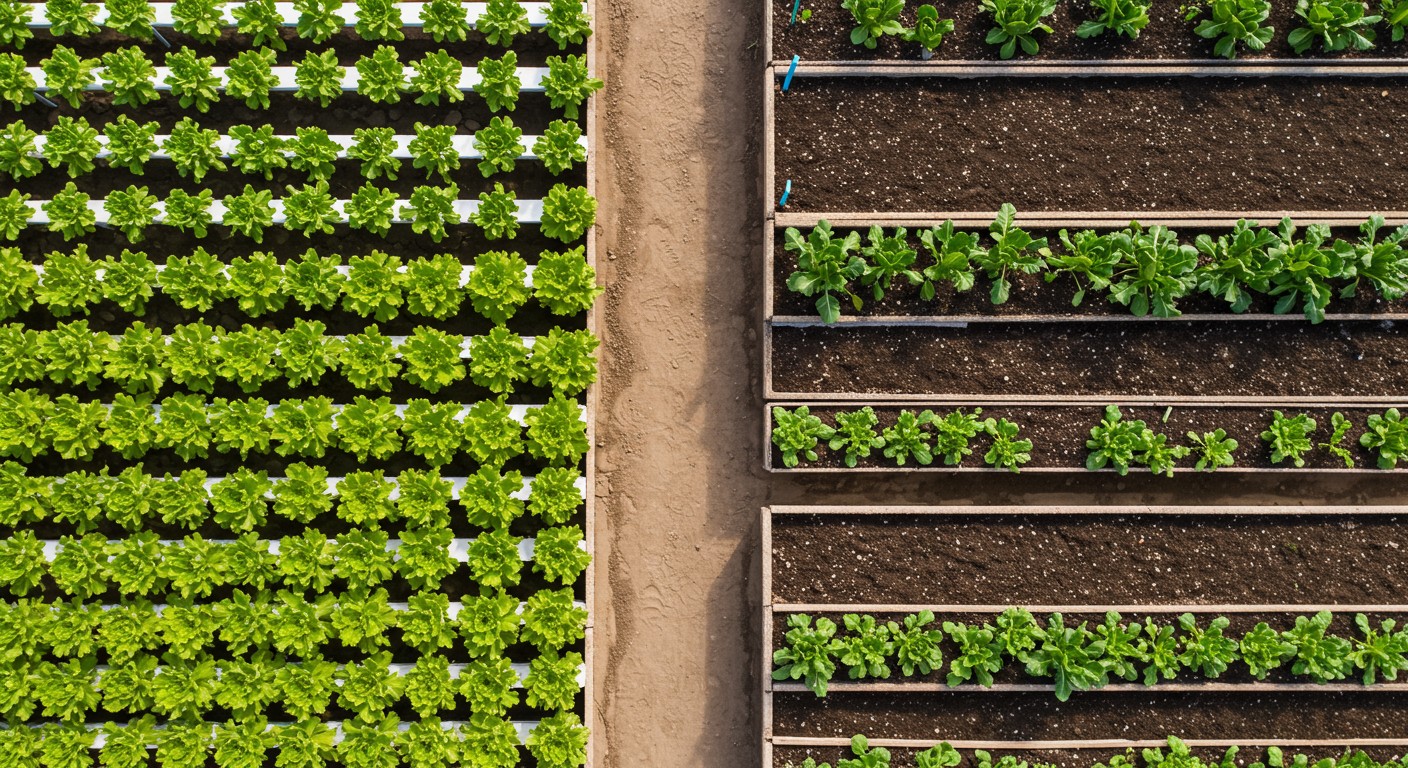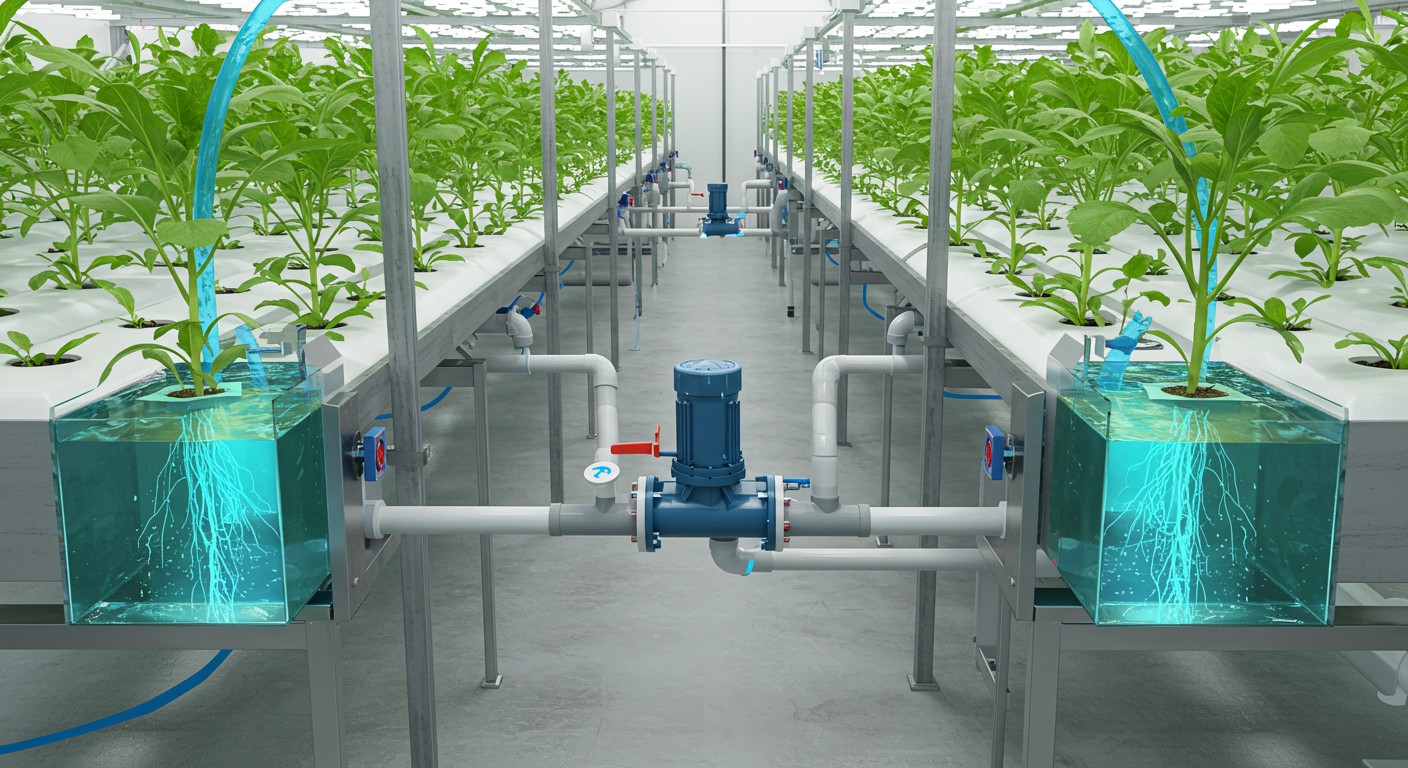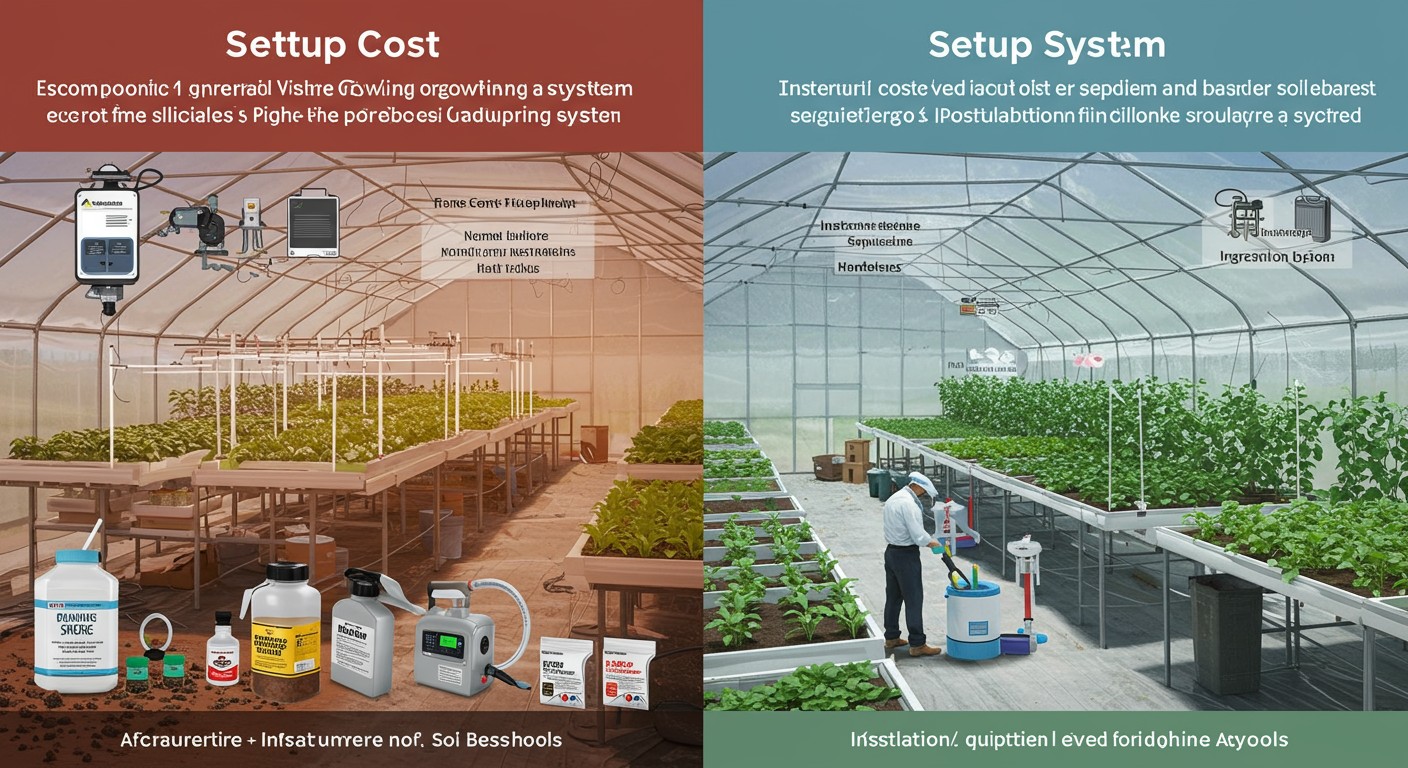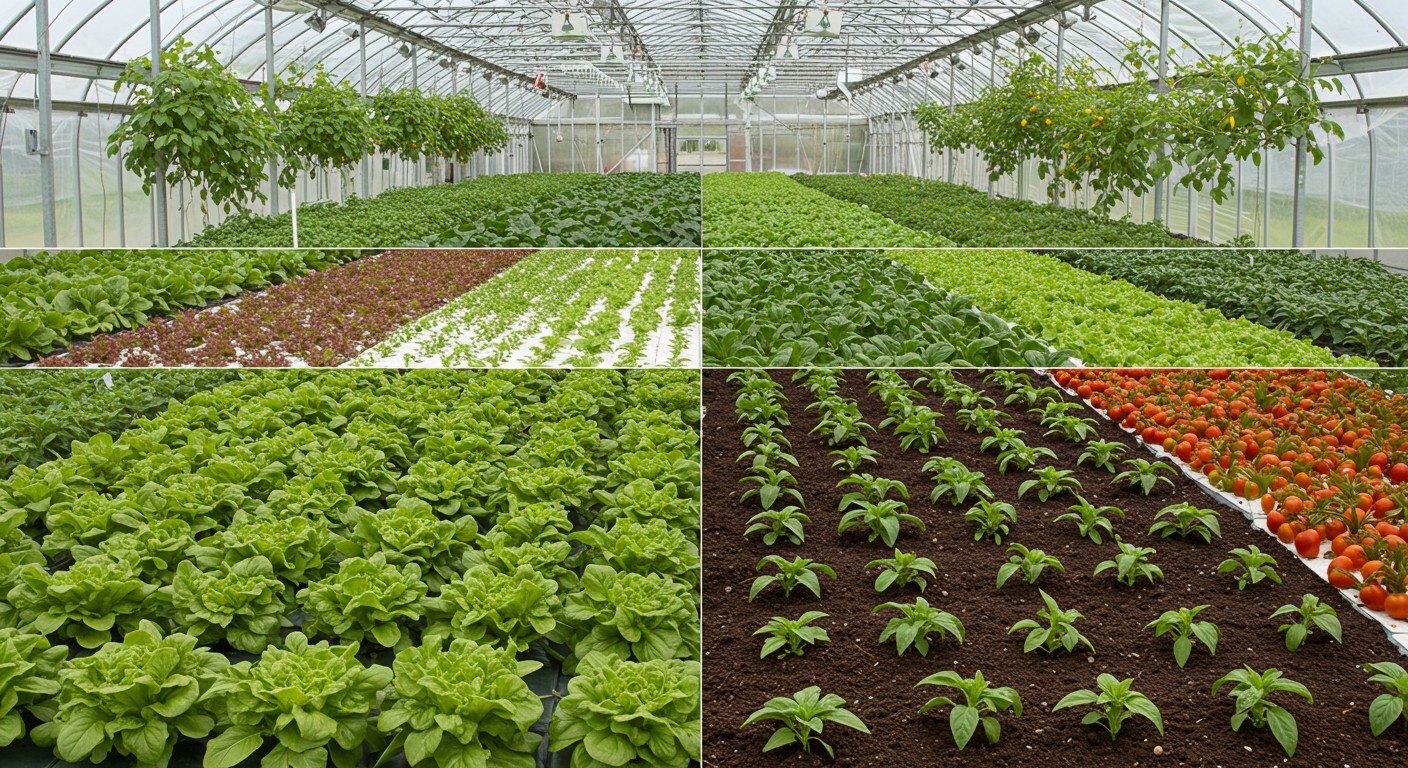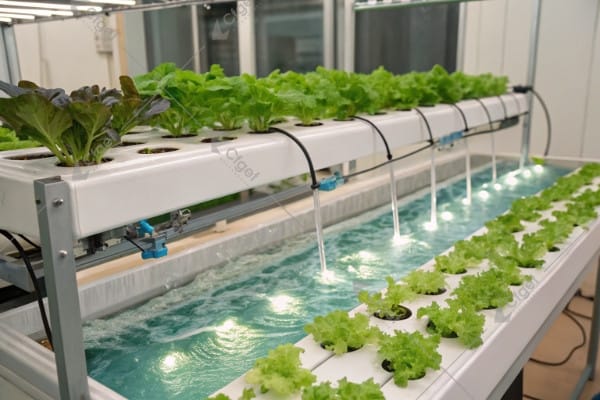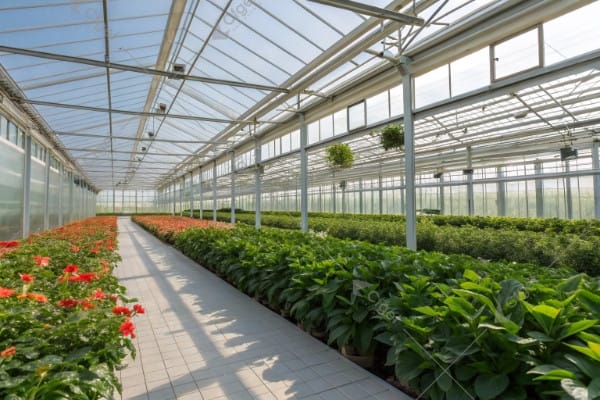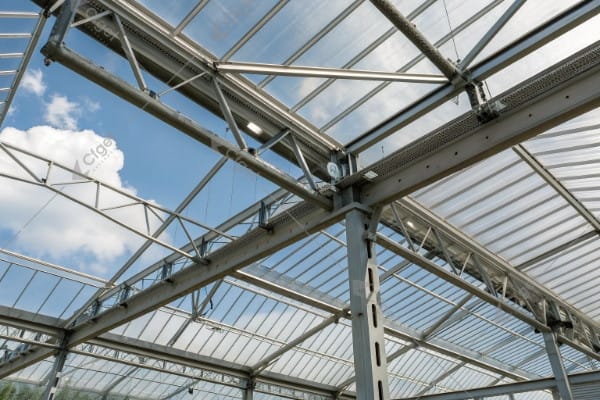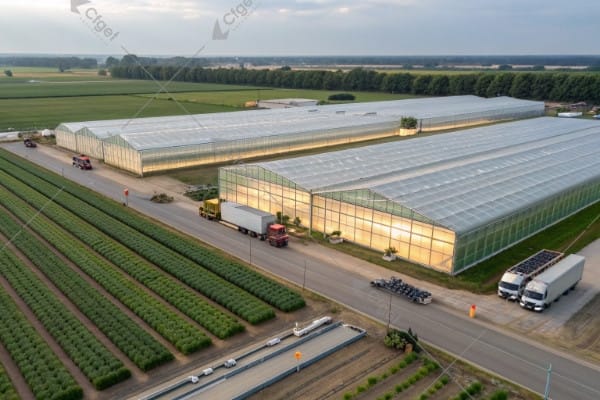When setting up a greenhouse, choosing between hydroponics and traditional soil growing can be confusing. Soil growing feels familiar, while hydroponics seems high-tech and modern. Both methods have their own strengths and weaknesses that can impact your growing success.
Comparing hydroponics to soil growing in greenhouses involves several factors including water efficiency, yield potential, setup costs, and suitable crop types. Hydroponic systems typically save 70-90% more water than soil growing, produce 20-50% higher yields, but have higher initial equipment costs. Soil growing has lower startup costs, is simpler to operate, but grows plants slower and is more vulnerable to pests and diseases.
In modern greenhouse cultivation, hydroponic technology is becoming increasingly popular, especially in areas with limited resources. But does this mean traditional soil growing is outdated? This article will analyze the advantages and disadvantages of both growing methods to help you choose the best system for your greenhouse.
Yield & Growth Speed: Comparing Hydroponic and Soil Methods?
One main goal of greenhouse growing is maximizing yield. Getting efficient output from limited space directly affects your return on investment, making growth speed and total yield key factors when choosing a growing system.
Hydroponic systems typically allow plants to grow 40-50% faster than in soil cultivation. This happens because plants in hydroponics receive nutrients directly through their roots without having to search for them in soil, which saves energy and speeds up growth.
Faster Growth Cycles
Plants in hydroponic systems don’t need to develop extensive root systems to search for nutrients as they would in soil. The roots are directly exposed to nutrient-rich water, allowing the plant to focus energy on above-ground growth. This leads to faster development and shorter time between planting and harvesting.
For commercial growers, these faster growth cycles mean:
- More harvests per year
- Better space utilization
- Quicker return on investment
- Greater flexibility in crop planning
Higher Yield Potential
Research shows that hydroponic growing can produce yields up to 20-25% higher than traditional soil methods. Studies have found that hydroponic systems are capable of producing higher quality produce with controlled comparisons showing improved results in many crops.
Product Quality Differences
While hydroponics often produces visually perfect and uniform crops, the debate about taste and nutrient content continues. Some studies suggest that:
- Soil-grown produce can have higher levels of certain micronutrients like calcium and magnesium
- Hydroponic crops are generally healthier and stronger due to optimized growing conditions
- Properly designed hydroponic systems can match or exceed the mineral content of soil-grown products
When comparing tomatoes specifically, research found that levels of lycopene and β-carotene were either similar or significantly higher in Deep Water Culture compared to growth systems using soil. This suggests that with proper nutrient management, hydroponic systems can produce highly nutritious crops.
Water & Nutrient Efficiency: Where Hydroponics Shines
Water conservation is becoming increasingly important in agriculture. One of the biggest advantages of hydroponics is its remarkable water efficiency compared to traditional soil growing.
Hydroponic systems use between 70-90% less water than soil cultivation because water is recirculated in a closed system rather than draining away or evaporating. This makes hydroponics highly sustainable, especially in water-scarce regions.
Water Savings in Numbers
The water efficiency difference between the two growing methods is dramatic:
- Traditional soil cultivation often loses water through drainage and evaporation
- In hydroponic systems, water is contained and recycled, with only small amounts lost through plant transpiration and evaporation
- Studies show hydroponic water usage can be as little as 10% of what traditional farming requires for the same yield
Research conducted at the Institute of Biological, Environmental and Rural Sciences found that plants in hydroponic systems transpired less water and were more water-efficient with a lower product water use than plants grown in soil.
Precise Nutrient Control
Beyond water savings, hydroponics offers unmatched control over plant nutrition:
- In soil, nutrients must break down before becoming available to plants
- With hydroponics, growers can precisely adjust nutrient levels to match plant needs
- This precision reduces nutrient waste and allows for optimization throughout different growth stages
- Problems can be corrected quickly by adjusting the nutrient solution
A hydroponic system called Deep Water Culture (DWC) has shown particularly promising results. Research indicates that levels of lycopene and β-carotene were either similar or significantly higher in DWC compared to growth systems using soil or drip irrigation. These findings highlight the potential for hydroponic systems to produce crops with excellent nutritional profiles.
Environmental Benefits
The environmental advantages of hydroponic water efficiency extend beyond just saving water:
- Less fertilizer runoff into local water systems
- Reduced soil erosion issues
- Lower transportation emissions when growing locally
- Year-round growing capacity regardless of climate
As the greenhouse industry increasingly focuses on sustainability, hydroponic systems represent a promising approach to reducing agriculture’s environmental footprint while maintaining or improving yield and quality. At CFGET, we’ve consistently observed these environmental benefits in our advanced greenhouse systems.
Setup Costs & Complexity: What to Expect with Each System
The financial and technical requirements of hydroponic and soil growing systems differ significantly. Understanding these differences is crucial for making an informed decision about which approach best suits your needs and resources.
Initial setup costs for hydroponic systems range from $500-$1,000 for small basic setups to over $100,000 for commercial operations. These systems require specialized equipment like pumps, growing mediums, and monitoring systems. Soil growing has much lower startup costs but often yields less and requires more space.
Initial Investment Comparison
The cost difference between starting with soil versus hydroponics can be substantial:
Soil System Startup Costs:
- Growing containers: $5-$20 each
- Quality soil mix: $15-$30 per cubic foot
- Basic irrigation: $50-$200
- Simple fertilizers: $20-$50
- Total small-scale startup: $200-$500
Hydroponic System Startup Costs:
- Reservoir and growing containers: $100-$300
- Pumps and aeration: $50-$200
- Nutrient solutions: $50-$100
- pH testing and adjustment tools: $30-$100
- Growing medium: $40-$200
- Total small-scale startup: $500-$1,000+
For commercial operations, these costs scale dramatically. A commercial greenhouse using hydroponics might require an investment of $35,000-$100,000+ depending on size and technology level. At CFGET, we help customers find the most cost-effective greenhouse solutions based on their specific needs and goals.
Technical Knowledge Requirements
The technical knowledge needed for each growing method also varies significantly:
Soil Growing:
- Basic understanding of plant needs
- Simple watering schedules
- Standard fertilization practices
- General pest management
Hydroponic Growing:
- Understanding of water chemistry
- Knowledge of electrical systems
- Monitoring and adjusting nutrient solutions
- Troubleshooting complex systems
- Maintaining proper oxygen levels
For beginners, soil growing generally offers a more forgiving learning curve. Mistakes in hydroponics can affect plants more rapidly due to the direct exposure of roots to the water system.
Ongoing Maintenance and Operational Costs
The day-to-day operation of each system presents different challenges:
Soil System Maintenance:
- Regular watering
- Occasional fertilizing
- Seasonal soil replacement or amendment
- More frequent pest and disease management
Hydroponic System Maintenance:
- Daily monitoring of water and nutrient levels
- Regular system cleaning to prevent algae and buildup
- Pump and equipment maintenance
- Higher electricity usage
- Nutrient solution replacement and adjustment
While hydroponics requires more technical maintenance, it typically requires less daily labor once systems are optimized. Soil growing generally requires more frequent direct attention for watering and care.
Return on Investment Factors
When calculating ROI, consider these factors that differ between the systems:
- Hydroponic yields are typically 20-50% higher than soil
- Hydroponics can allow for more crop cycles per year
- Soil systems have lower initial investment but often lower yields
- Energy costs are higher for hydroponics but labor costs may be lower
- Hydroponic crops often command premium prices in certain markets
For commercial growers, the higher initial investment in hydroponics can often be justified through increased production and year-round growing capacity. For hobbyists or small-scale growers, the decision may depend more on personal interest in the technology and desired level of involvement.
Is Hydroponics Right for Your Greenhouse Crops & Goals?
Choosing between hydroponics and soil isn’t just about efficiency or cost—it’s also about matching the growing method to your specific crops and long-term goals. Different plants thrive in different systems, and your personal priorities will influence which approach works best for you.
Leafy greens, herbs, strawberries, and vine crops like tomatoes and cucumbers excel in hydroponic systems. Root vegetables and plants with extensive root systems often do better in soil. Your choice should align with your priorities—whether that’s maximizing yield, minimizing environmental impact, or optimizing for specific crop types.
Best Crops for Hydroponic Growing
Not all plants are equally suited to hydroponic cultivation. These crops typically perform exceptionally well in soilless systems:
Leafy Greens:
- Lettuce (all varieties including romaine, butterhead)
- Spinach
- Kale
- Arugula
- Swiss chard
Herbs:
- Basil
- Cilantro
- Mint
- Oregano
- Thyme
Fruits and Vegetables:
- Strawberries
- Tomatoes
- Cucumbers
- Bell peppers
- Snap peas
According to our experience at CFGET, most hydroponic farms focus on growing leafy greens, herbs, or microgreens, while some other crops like strawberries and peppers have also been successfully adapted to various hydroponic systems.
Crops Better Suited for Soil
Some crops present challenges in hydroponic systems and may perform better in traditional soil:
- Root vegetables (carrots, potatoes, radishes)
- Plants requiring extensive root support
- Crops with long growth cycles
- Plants requiring soil microorganisms for optimal development
- Some perennial plants and shrubs
Aligning with Your Greenhouse Goals
Consider your primary objectives when choosing between systems:
If your priority is environmental sustainability:
Hydroponics typically offers superior water efficiency, using 70-90% less water than soil methods. This makes it ideal for drought-prone regions or environmentally conscious operations.
If your main concern is startup cost:
Soil growing has a much lower barrier to entry financially. If you’re just starting out or testing a greenhouse concept, soil might be the safer initial investment.
If you’re focused on maximum productivity:
For commercial operations, hydroponics generally offers higher yields in less space, which can justify the higher initial investment through increased revenue.
If you value simplicity and tradition:
Soil growing is more familiar and forgiving for beginners. It requires less technical knowledge and has a gentler learning curve.
Hybrid Approaches
Many successful greenhouse operations don’t choose exclusively between hydroponics and soil, but instead use hybrid approaches:
- Starting plants in soil and transitioning to hydroponics
- Using soil for certain crops and hydroponics for others
- Implementing semi-hydroponic systems that combine elements of both methods
As experienced greenhouse designers at CFGET, we’ve found that with a similar fertilization regime provided to quite different cultivation systems, it is possible to produce similar or better crop quality in hydroponic systems compared to soil and to produce the crop using significantly less water.
Conclusion
When deciding between hydroponics and traditional soil growing for your greenhouse, there is no one-size-fits-all answer. Each system has its own strengths that may align better with different goals and circumstances.
Hydroponics offers superior water efficiency, faster growth, higher yields, and excellent performance for leafy greens and certain fruits. However, it requires higher initial investment and more technical knowledge. Soil growing provides simplicity, lower startup costs, and better suitability for certain crop types, though it typically uses more water and produces lower yields.
For professional guidance on selecting the best greenhouse growing system for your specific needs, please visit CFGET to learn about our 28 years of industry experience in designing, manufacturing, and providing technical support for greenhouse systems and agricultural solutions.

